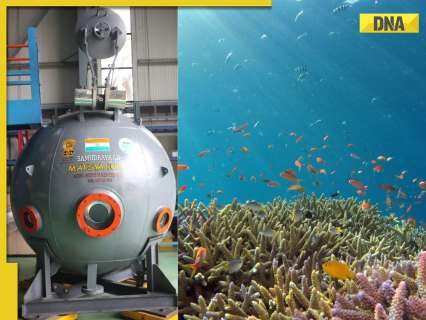Now Reading: India’s First Manned Deep-Sea Mission ‘Samudrayaan’ to Dive 6,000m by 2026
-
01
India’s First Manned Deep-Sea Mission ‘Samudrayaan’ to Dive 6,000m by 2026
India’s First Manned Deep-Sea Mission ‘Samudrayaan’ to Dive 6,000m by 2026

Swift Summary
- Mission Overview: India’s first manned deep ocean mission, Samudrayaan, is expected too launch by the end of 2026. It will employ the indigenous submersible vehicle Matsya to descend to a depth of 6,000 meters.
- Technology Details: Matsya weighs 25 tonnes and features a titanium hull designed to endure extreme pressure and temperature. The mission will be led by three scientists aboard the Matsya submersible.
- objectives: The mission aims at deep-sea exploration for assessing marine resources (living and non-living),gathering biological/geological samples,enhancing ocean observation capabilities,and potentially enabling avenues like deep-sea tourism.
- Trial Phase: A critical trial phase at 500 meters depth is scheduled for completion by late 2023. Each descent/ascent during the operation will take approximately four hours.
- Samudrajivah Technology: Another innovation in progress is Samudrajivah-electronically monitored submerged fish cages designed for offshore nutrient-rich zones.This project focuses on advancing large-scale offshore fish farming with potential benefits for food security through remote monitoring sensors tracking water quality, growth, biomass movement, etc.
- Collaborative Efforts: CMFRI Director Dr Grinson George highlighted integrating NIOT’s technological breakthroughs with CMFRI’s research efforts as key to fostering India’s blue economy while emphasizing seaweed farming and developing warning systems against harmful algal blooms.
Indian Opinion Analysis
The Samudrayaan project symbolizes India’s growing commitment toward scientific advancement and enduring resource exploration within its maritime domain. By relying on fully indigenous technology such as the Matsya submersible vehicle, it underscores self-reliance in cutting-edge research capabilities-a crucial step for pioneering work in ocean sciences globally.
This initiative could have important implications not only for understanding unexplored underwater ecosystems but also economic opportunities tied to marine bioprospecting or even future tourism ventures-realigning India’s developmental priorities with sustainability goals under its blue economy vision.Furthermore, marrying scientific innovation like Samudrajivah’s electronically monitored fish cages with mariculture activities could address vital challenges linked to food security amid rising environmental strains. Such advancements paired with robust early warning systems (e.g., jellyfish surveillance) may furnish coastal communities better preparedness against ecological changes-showcasing how emerging science can support societal resilience alongside economic upliftment strategies.
While promising both technologically and strategically (the trials suggest realistic timeframes), ensuring ethical standards remain intact during human-led underwater explorations remains pivotal given ecological sensitivities deeper within oceans. Protecting biodiversity must run parallel alongside new commercial pursuits post-findings retrieval phases established systematically moving forward
























